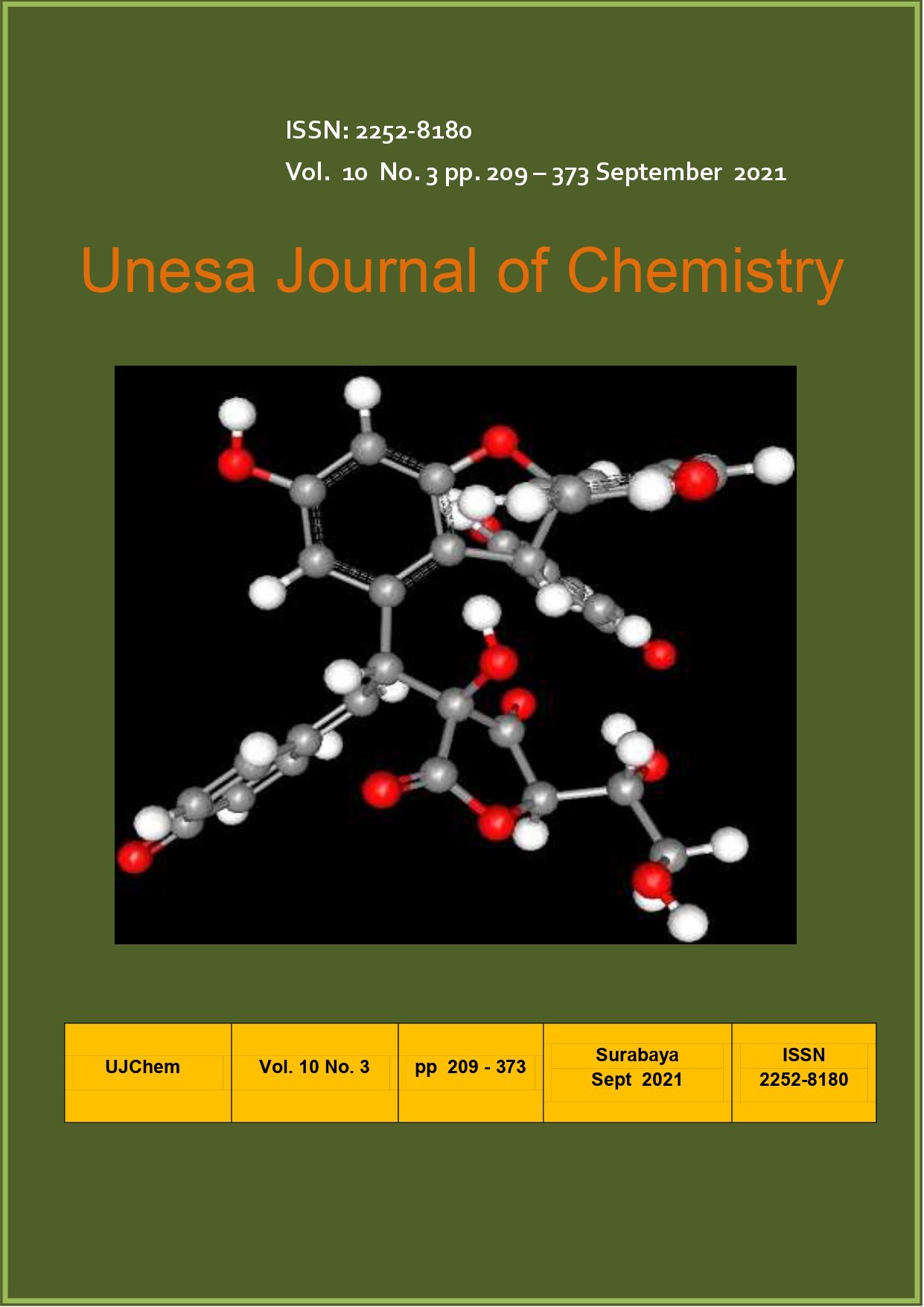PENGARUH KONSENTRASI KLORAMFENIKOL TERHADAP ADSORPSI POLIMER CETAK MOLEKUL DENGAN METODE PRESIPITASI EFFECT OF CHLORAMPHENICOL CONCENTRATION ON MOLECULARLY IMPRINTED POLYMER ADSORPTION USING PRESIPITATION METHOD
Main Article Content
Downloads
Download data is not yet available.
Article Details
How to Cite
Atqa, A. R., & Sianita, M. M. (2021). PENGARUH KONSENTRASI KLORAMFENIKOL TERHADAP ADSORPSI POLIMER CETAK MOLEKUL DENGAN METODE PRESIPITASI: EFFECT OF CHLORAMPHENICOL CONCENTRATION ON MOLECULARLY IMPRINTED POLYMER ADSORPTION USING PRESIPITATION METHOD. Unesa Journal of Chemistry, 10(3), 257–267. https://doi.org/10.26740/ujc.v10n3.p257-267
Issue
Section
Articles

